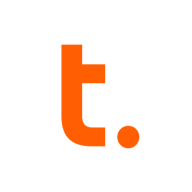

Teradata and Sisense compete in the data analytics and business intelligence category. Sisense appears to have the upper hand due to its user-friendly nature and competitive pricing, especially for small to medium businesses.
Features: Teradata is recognized for its parallel processing, scalability, and comprehensive analytics capabilities, managing large data volumes swiftly. It also offers advanced data partitioning, adaptable workload management, and robust security measures. Sisense stands out for its ease of use, intuitive dashboard design, and ability to integrate multiple data sources quickly. It is favored for delivering visually appealing dashboards and offering powerful customizability.
Room for Improvement: Teradata faces criticism for pricing and complex initial setup, along with cloud integration challenges and support for unstructured data. Sisense could improve its support for complex data models, expand data source compatibility, and reduce additional costs for integrations and add-ons.
Ease of Deployment and Customer Service: Teradata provides a versatile deployment platform across on-premises, hybrid, and public clouds, with comprehensive technical support, though response time can improve. Sisense offers smooth deployment in public cloud environments but can have cumbersome administrative tools; however, it's rated highly for user-friendliness and support.
Pricing and ROI: Teradata involves high total costs but is justified by significant ROI, especially suitable for large enterprises. Sisense offers competitive pricing for smaller businesses, though it can be pricier than some competitors. Both solutions deliver value in ROI, enhancing customer satisfaction and analytics capabilities despite costs.
The support was very good.
The technical support from Teradata is quite advanced.
Customer support is very good, rated eight out of ten under our essential agreement.
This expansion can occur without incurring downtime or taking systems offline.
Scalability is complex as you need to purchase a license and coordinate with Teradata for additional disk space and CPU.
I find the stability to be almost a ten out of ten.
The workload management and software maturity provide a reliable system.
I would like to see an improvement in the live data connection, specifically making the process faster.
Unlike SQL and Oracle, which have in-built replication capabilities, we don't have similar functionality with Teradata.
There was no significant difference in pricing between Sisense and ThoughtSpot.
Initially, it may seem expensive compared to similar cloud databases, however, it offers significant value in performance, stability, and overall output once in use.
Teradata is much more expensive than SQL, which is well-performed and cheaper.
It offers two ways to access data: by cubing the data or hitting it live.
The data mover is valuable over the last two years as it allows us to achieve data replication to our disaster recovery systems.


Sisense is an end-to-end business analytics software that enables users to easily prepare and analyze large, complex datasets. Sisense’s Single-Stack BI software includes data preparation, data management, analysis, visualization and reporting capabilities.
Teradata is a scalable data analytics platform designed to meet enterprise demands for large-scale data management and processing, focusing on performance, scalability, and security for complex query executions.
As a leading data warehousing solution, Teradata integrates advanced analytics enabling organizations to derive insights from massive datasets. It supports high-volume data workloads with its architecture optimized for analytical queries. Users benefit from its robust scalability, allowing seamless expansion as data grows. Teradata's SQL engine is compatible with a wide range of data types, ensuring flexibility in data analysis. With advanced security measures, it protects sensitive data across various environments, providing peace of mind to users handling critical information.
What are the most important features of Teradata?Teradata is widely used in industries like finance, telecommunications, and healthcare, where data-driven decisions are critical. Companies leverage its robust analytics capabilities to enhance customer experiences, streamline operations, and ensure compliance with regulatory requirements. In these sectors, quick access to data insights can significantly impact competitive advantage.
We monitor all BI (Business Intelligence) Tools reviews to prevent fraudulent reviews and keep review quality high. We do not post reviews by company employees or direct competitors. We validate each review for authenticity via cross-reference with LinkedIn, and personal follow-up with the reviewer when necessary.